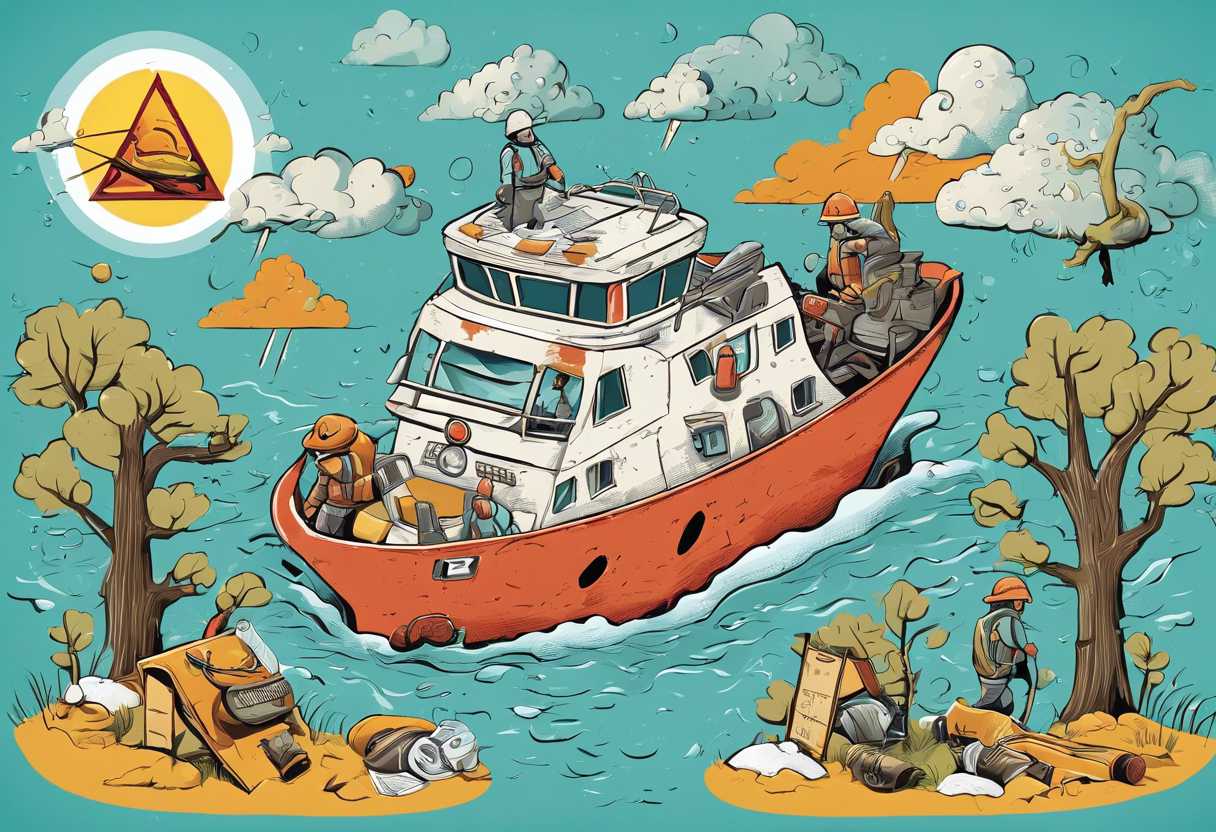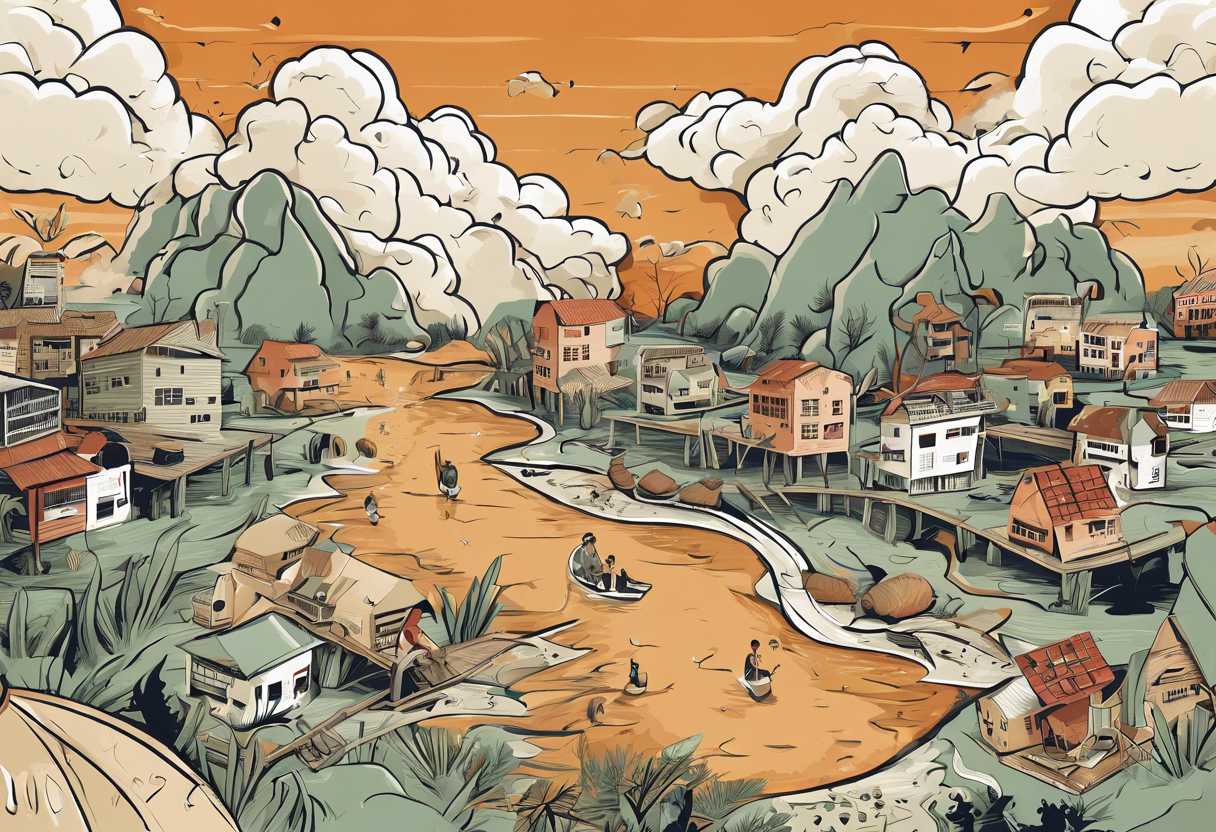Welcome to our comprehensive overview of hazard, disaster, and disaster risk. In this blog post, we will delve into the definitions, examples, and implications of these critical concepts, as well as explore strategies for prevention and preparedness.
First, we will differentiate between hazard and disaster, providing clear definitions and real-world examples to illustrate the distinction between the two. Understanding this difference is crucial for assessing disaster risk and implementing effective mitigation strategies.
Speaking of disaster risk, we will also discuss the various factors and methods used to assess it, as well as the implications of these assessments for communities and environments. By understanding the potential impact of hazard and disaster, we can better prepare and protect ourselves and our surroundings.
Finally, we will explore strategies for mitigating disaster risk, including prevention and preparedness measures. By implementing these strategies, we can work towards minimizing the impact of hazards and disasters on our communities and environments.
Stay tuned as we dive into these important topics and gain a deeper understanding of hazard, disaster, and disaster risk.
Understanding Hazard, Disaster, and Disaster Risk: A Comprehensive Overview
The Difference Between Hazard and Disaster
It’s important to understand the distinction between hazard and disaster. A hazard refers to a potential source of harm or adverse health effect on a person or the environment. This could be a natural event such as an earthquake, flood, or hurricane, or a man-made event such as a chemical spill or industrial accident. On the other hand, a disaster is the actual occurrence of a hazard that causes significant disruption, damage, and destruction, leading to human, material, economic, and environmental losses. Understanding this difference is crucial in developing effective disaster risk reduction strategies.
Factors Contributing to Disaster Risk
Disaster risk is influenced by a combination of hazards, exposure, and vulnerability. Hazards are the natural or human-induced events that have the potential to cause harm, while exposure refers to the people, property, systems, or other elements present in hazard-prone areas. Vulnerability, on the other hand, is the susceptibility of these elements to the impacts of hazards. Understanding the interplay between these factors is essential in assessing and managing disaster risk.
- Common natural hazards include earthquakes, tsunamis, floods, hurricanes, and wildfires.
- Man-made hazards encompass industrial accidents, chemical spills, nuclear incidents, and terrorist attacks.
- Exposure can be influenced by population density, urbanization, and infrastructure development.
- Vulnerability is shaped by factors such as poverty, inequality, inadequate building codes, and weak governance.
Measuring and Assessing Disaster Risk
There are various methodologies and tools for measuring and assessing disaster risk. One commonly used approach is the risk assessment, which involves identifying hazards, analyzing exposure and vulnerability, and evaluating the potential impacts. This process helps in prioritizing actions and investments for disaster risk reduction. Additionally, the use of risk models and mapping techniques can provide valuable insights into the spatial distribution and magnitude of disaster risk, aiding in the development of targeted interventions and policies.
| Risk Assessment | Identifying hazards, analyzing exposure and vulnerability, evaluating potential impacts |
| Risk Models | Quantitative tools for estimating the likelihood and consequences of disasters |
| Mapping Techniques | Visual representations of disaster risk to inform decision-making and planning |

The Difference Between Hazard and Disaster: Exploring Definitions and Examples
Understanding Hazards and Disasters
When discussing hazards and disasters, it’s important to understand the distinction between the two. A hazard refers to any potential source of harm or adverse health effect on a person or the environment. This can include natural hazards such as earthquakes, floods, and hurricanes, as well as human-made hazards like chemical spills and industrial accidents. On the other hand, a disaster is the actual occurrence of a hazard that results in significant damage, destruction, and human suffering. It’s crucial to recognize the difference between the two in order to effectively mitigate and respond to these events.
Examples of Hazards and Disasters
To further illustrate the disparity between hazards and disasters, let’s consider some real-world examples. A hurricane forming in the Atlantic Ocean is a hazard, as it has the potential to cause widespread damage and destruction if it makes landfall. However, if the hurricane does hit land and results in extensive flooding, infrastructure damage, and loss of life, it then becomes a disaster. Similarly, a chemical plant storing hazardous materials is a hazard due to the potential for a leak or explosion. If such an event occurs and leads to contamination of the surrounding area and harm to nearby residents, it becomes a disaster.
Implications for Risk Management
Understanding the difference between hazards and disasters is crucial for effective risk management. By identifying and assessing potential hazards, organizations and communities can develop strategies to mitigate their impact and reduce the likelihood of a disaster occurring. This can involve implementing safety protocols, investing in infrastructure improvements, and developing emergency response plans. Additionally, recognizing the distinction between hazards and disasters allows for more accurate forecasting and preparedness efforts, ultimately leading to better outcomes in the face of adversity.

Assessing Disaster Risk: Factors, Methods, and Implications
Factors Affecting Disaster Risk
When assessing disaster risk, it’s crucial to consider various factors that can contribute to the likelihood and severity of a disaster. These factors can include geographical location, climate patterns, population density, infrastructure quality, and socio-economic conditions. *Understanding these factors can help in predicting and preparing for potential disasters, as well as in developing effective risk reduction strategies.*
Methods for Assessing Disaster Risk
There are several methods and tools available for assessing disaster risk, each with its own strengths and limitations. These methods can include hazard mapping, vulnerability assessments, risk modeling, and scenario analysis. *By utilizing these methods, stakeholders can gain a comprehensive understanding of the potential impact of disasters and prioritize resources for mitigation and preparedness efforts.*
Implications of Disaster Risk Assessment
Assessing disaster risk has significant implications for disaster management and resilience-building efforts. It can inform land-use planning, infrastructure development, emergency response planning, and community engagement. *Furthermore, it can help in securing funding for risk reduction projects and in advocating for policy changes to enhance disaster preparedness and response.*
The Impact of Hazard and Disaster on Communities and Environments
Social and Economic Impact
When a hazard or disaster strikes, it can have a profound impact on the social and economic well-being of communities. Displacement, loss of livelihoods, and damage to infrastructure can lead to long-term consequences for the affected population. *Communities may struggle to recover and rebuild, leading to increased poverty and social inequality.* The economic impact can also be significant, with businesses and industries suffering losses, and the overall economy of the region being affected.
Environmental Degradation
Hazards and disasters can also have a detrimental effect on the environment. *Natural habitats may be destroyed, leading to loss of biodiversity and disruption of ecosystems.* Pollution from debris and hazardous materials can contaminate soil and water sources, further exacerbating the environmental impact. *The long-term consequences of environmental degradation can be far-reaching, affecting not only the immediate area but also neighboring regions and ecosystems.*
Community Resilience and Adaptation
In the face of hazards and disasters, communities must develop resilience and adaptability to mitigate the impact. *This can involve implementing early warning systems, developing emergency response plans, and investing in infrastructure that is resistant to hazards.* Building community resilience also involves fostering social cohesion and empowering local leadership to effectively respond to and recover from disasters. *By promoting sustainable practices and environmental conservation, communities can also work towards reducing their vulnerability to future hazards.*
Mitigating Disaster Risk: Strategies for Prevention and Preparedness
Understanding Disaster Risk
Disaster risk can be defined as the potential loss or damage to people, property, and the environment due to natural or man-made hazards. Understanding the different types of hazards and their potential impact is crucial in developing effective strategies for prevention and preparedness. Natural hazards such as earthquakes, floods, and hurricanes, as well as man-made hazards like industrial accidents and terrorist attacks, all pose significant risks that need to be addressed.
Prevention Strategies
Preventing disasters involves a combination of measures aimed at reducing the likelihood of hazards occurring and minimizing their impact. This can include land-use planning to avoid building in high-risk areas, implementing building codes and standards to ensure structural resilience, and investing in early warning systems to alert communities of impending threats. Additionally, promoting environmental conservation and sustainable development practices can help mitigate the risk of natural disasters.
- Land-use planning
- Building codes and standards
- Early warning systems
- Environmental conservation
Preparedness Measures
Being prepared for disasters is essential in minimizing their impact on lives and livelihoods. This involves developing and testing emergency response plans, conducting regular drills and exercises, and ensuring that communities have access to essential resources such as food, water, and medical supplies. Collaborating with local authorities, emergency services, and community organizations is also crucial in building resilience and ensuring a coordinated response in the event of a disaster.
- Developing emergency response plans
- Conducting drills and exercises
- Ensuring access to essential resources
- Collaborating with local authorities and community organizations
Conclusion
Understanding hazard, disaster, and disaster risk is crucial for individuals, communities, and governments to effectively prepare for and mitigate potential threats. By exploring the differences between hazard and disaster, assessing disaster risk factors and implications, and examining the impact of hazard and disaster on communities and environments, we have gained valuable insights into the complexities of these phenomena.
It is evident that disaster risk is influenced by a multitude of factors, including natural hazards, human activities, and environmental conditions. By implementing proactive strategies for prevention and preparedness, such as early warning systems, infrastructure improvements, and community education, we can significantly reduce the impact of disasters and protect lives and livelihoods.
As we continue to navigate an increasingly complex and interconnected world, it is essential to prioritize disaster risk reduction and resilience-building efforts. By working together to address the root causes of vulnerability and strengthen our collective capacity to respond to emergencies, we can create safer and more sustainable communities for future generations.
Let us remain vigilant and proactive in our efforts to understand, assess, and mitigate disaster risk, and strive to build a more resilient and secure future for all.
Thank you for joining us on this journey of exploration and discovery. We hope that the knowledge and insights gained from this comprehensive overview will empower you to make informed decisions and take meaningful action in your personal and professional endeavors.
Stay safe, stay informed, and stay prepared.

